The SMS Marketer’s Guide to Conversational Commerce 2.0
Don’t call it a playbook.
One-size-fits-all strategy ends here.

Part 1: The rise of text
Relationships: the lifeblood of a society. Relationships influence how we experience the world around us and how we make decisions. They feed our human desire to feel a sense of belonging and connection to one another.
For ecommerce brands, building high-caliber relationships with customers is critical to achieving the ultimate prize: growth and scale.
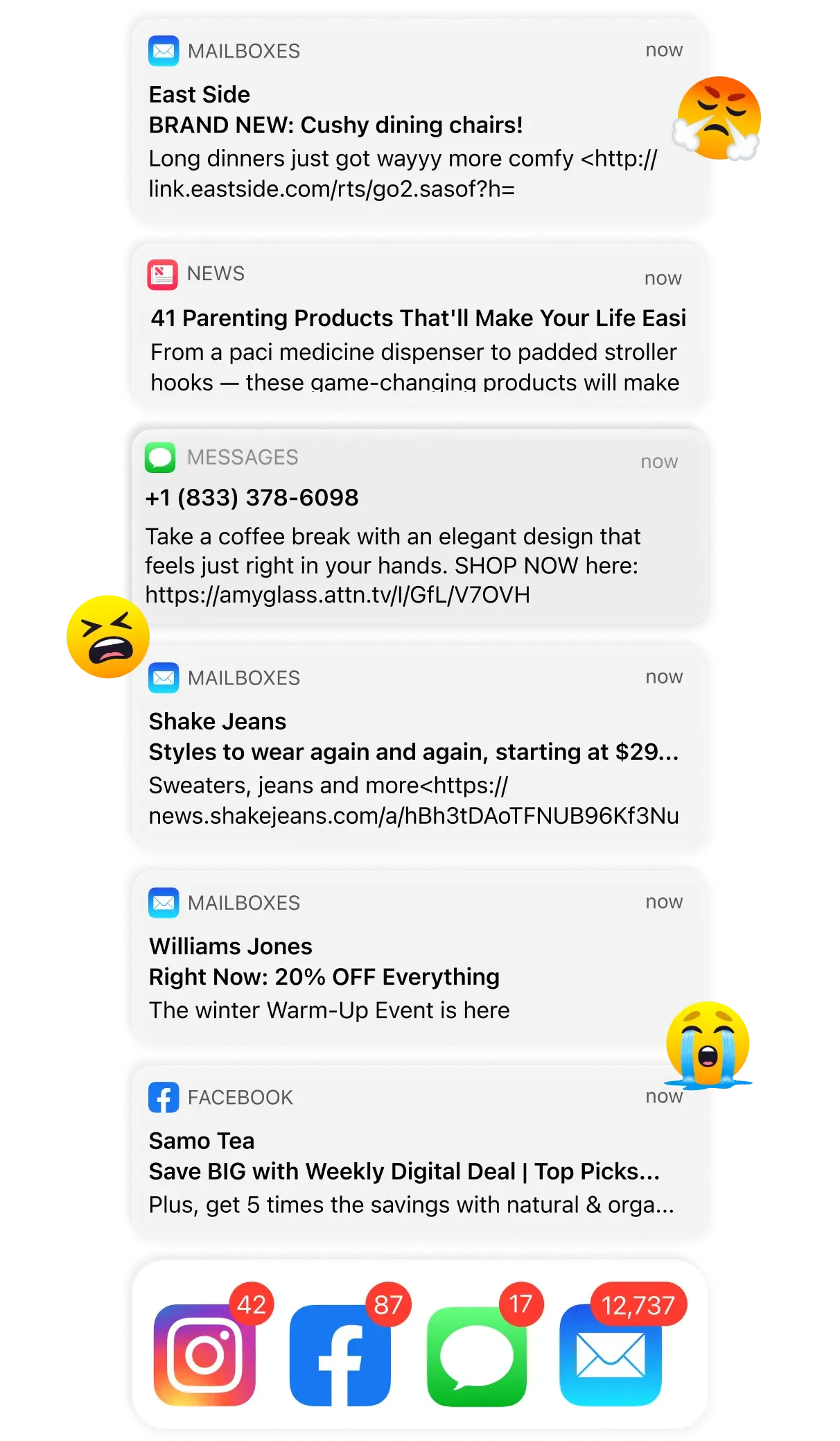
The battle for attention
Modern consumers face a constant barrage of messaging everywhere they go, whether they’re scrolling their social media feeds or scanning a bus-stop advertisement.
And those are just the ones from marketers.
Brands are not only competing with other businesses for consumer attention; they’re also vying with consumers’ friends and family—not to mention the billions of other content creators around the world. Advances in technology have empowered virtually anyone to publish virtually anything. All you need is a smartphone.
At first, ecommerce marketers “cut through the noise” by buying ad placements, sending out email blasts, and crafting social media strategies based on their knowledge of algorithms.
That worked for a while. But as consumers of all ages shifted their behavior and spent more time online, those tactics became mainstream. Bigger businesses with deeper pockets and more employees showed up and took over. Smaller merchants were left in the dust.
Suddenly, every brand was sending emails—and open rates plateaued.
Paid ads became very expensive. Acquisition and retargeting costs made digital advertising less accessible to small brands.
Social platforms and search engines, driven by ad dollars, kept changing their algorithms and making it difficult for marketers to find their footing and keep up.
All of this pressure produced a natural reaction—a push.
Brands went full-steam ahead, pumping out more and more marketing messages with the misguided thought that the only way to be seen was to “flood” consumers with messaging until they paid attention.
It did not go down well.
Consumers railed against the commercial marketing blitz.
Marketers scorched the promised land they had once relied on.
SMS on the scene
In the midst of the flood, SMS (short message service—a.k.a. “text message marketing”) emerged on the scene.
SMS allows brands to reach consumers in their most personal inbox: their text messages. It gives brands access to a channel previously reserved for an individual’s innermost circle of friends, family members, and acquaintances. Compliance regulations and governing bodies (like TCPA and CTIA) came into play to protect consumers from commercial abuse of that access. But that didn’t stop brands from using text like they would any other channel. In some cases, they simply didn’t know any better.
Instead of texting subscribers with a segmented, conversational approach, many companies resorted to sending blast after blast.
Thanks to the novelty of the channel, this blanket approach worked for a while—but consumers’ attention span and tolerance for such pushy, one-directional messaging (think BUY NOW and FLASH SALE) led to high unsubscribe rates, wasted marketing dollars, and bad brand reputations.
The platforms brands used to deploy these annoying messages were equally responsible for the backlash. Operating on a per-message pricing model, many SMS providers encouraged high-frequency, full-list sends—customer experience be damned.
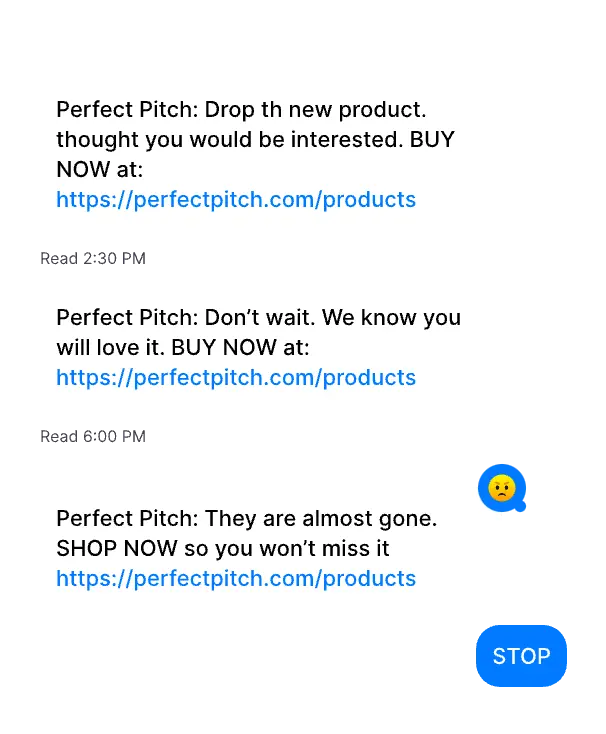
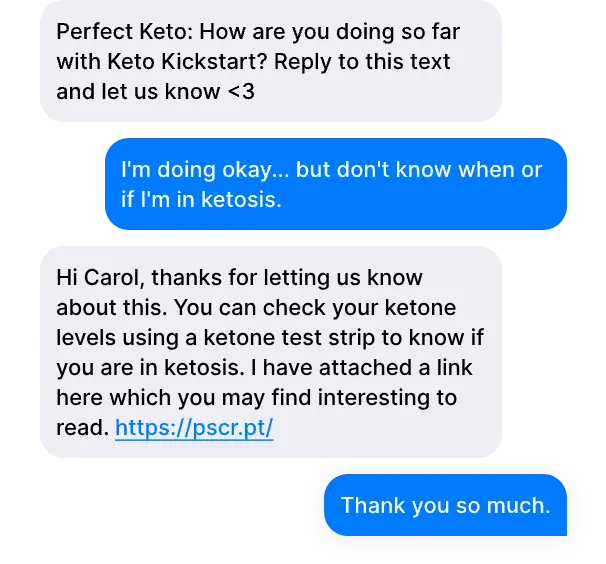
SMS marketing →
Conversational commerce 2.0
Still, some brands were able to actually improve the customer experience using SMS. How? By taking a radically different approach to their SMS strategy. These brands view SMS as a two-way communication channel—one where they encourage subscriber interaction and focus on building personalized, carefully nurtured relationships.
These brands have shifted out of the mindset of short-term gains. Instead, they’re keeping their eye on the long-term goal of maximizing customer retention, loyalty, and lifetime value.
Conversational commerce 2.0
A new, empathy-driven approach to SMS communication that focuses on treating subscribers and customers like people in order to build lasting, long-term relationships.
These brands have taken a finer-tuned approach to SMS—with an emphasis on mindfulness, customer delight, and mutual respect.
For most, that means using the data they have gathered from subscribers to create more targeted, intentional messaging. By leveraging the full power of automations, filters, and segments, brands can drastically improve messaging relevancy and build better relationships with their SMS audience.
It’s not necessarily about sending less often. It’s about sending more relevant, personalized messages—especially ones that invite the sort of two-way interaction text was made for.
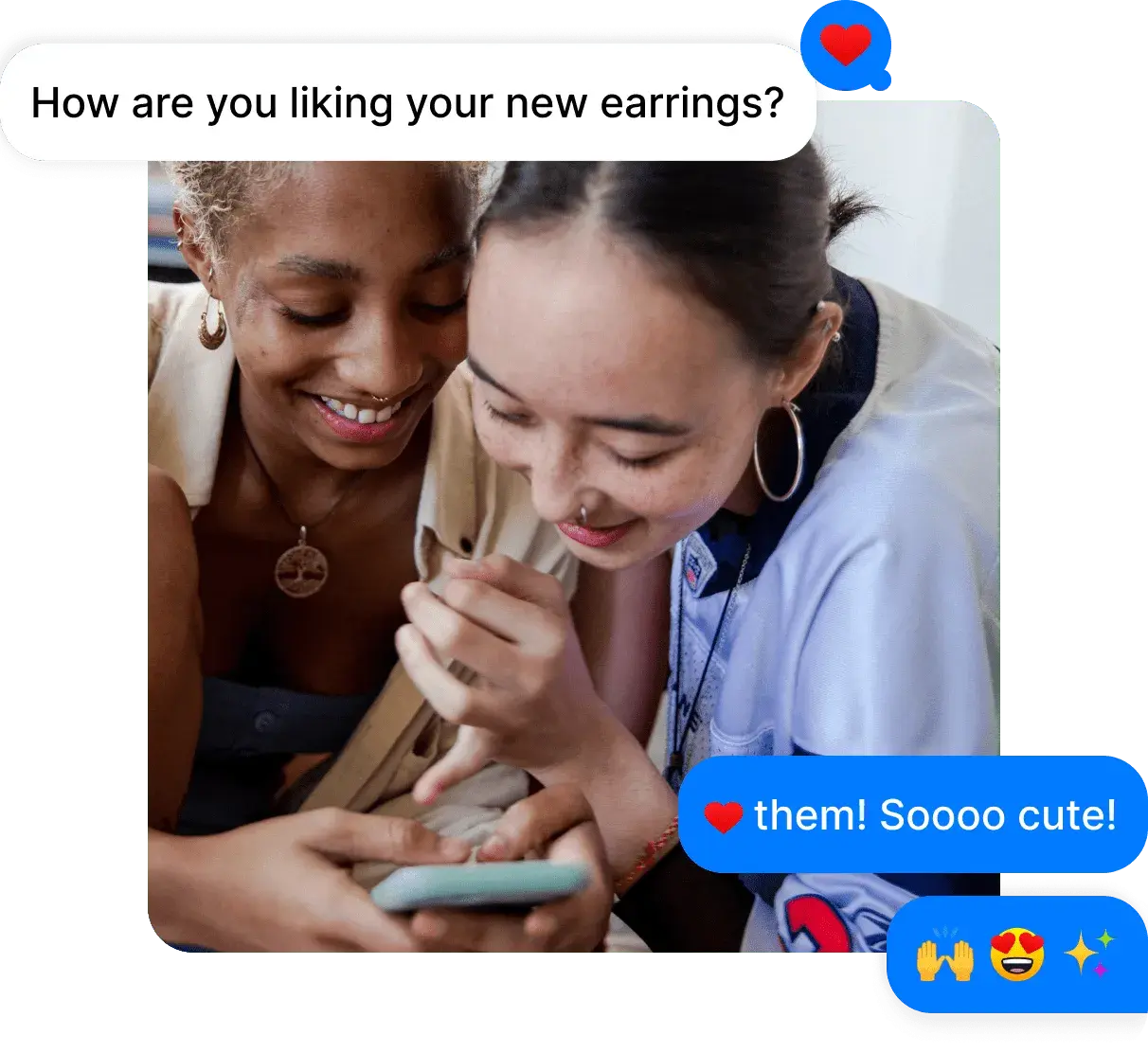
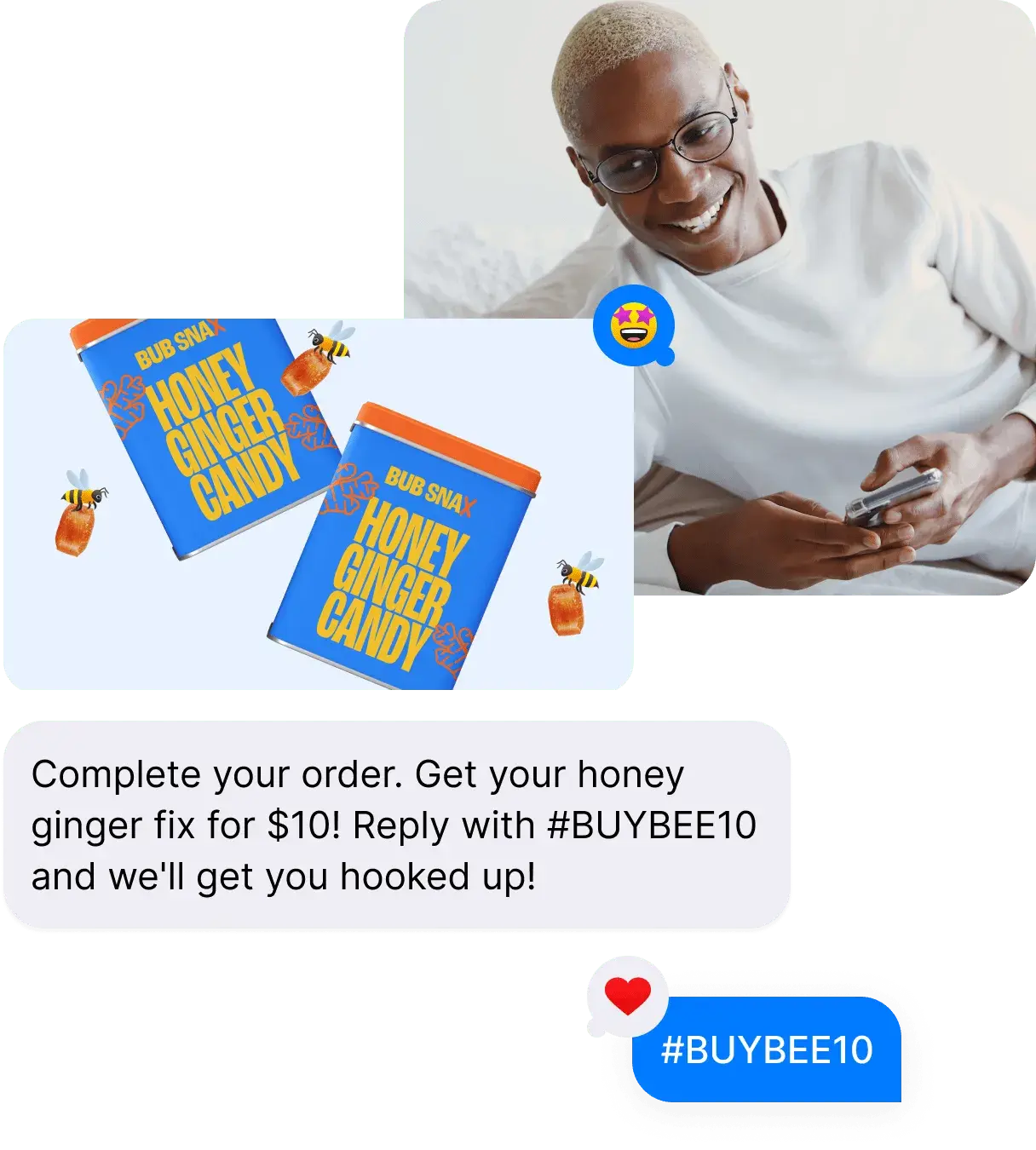
Why conversational commerce 2.0 works
This new approach to SMS—where brands text customers as they would their friends—works for several reasons.
First and foremost, customers get fewer generic messages. They feel like the texts they’re receiving were written specifically for them—which makes them more likely to read each one. This leads to better performance in the form of lower unsubscribe rates, more click-throughs, and higher conversion rates. Focusing on these metrics is critical to ensuring the longevity of this marketing channel over the next decade.
This approach also leads to a healthier, more stable ROI. Yup—segmentation and personalization not only help preserve blossoming relationships between brands and subscribers; it also saves those brands precious marketing dollars.
By taking a more targeted approach to interacting with subscribers and leveraging data—like past purchases, buyer behavior, etc.—brands can develop deeper customer relationships and gain long-term visibility in one of their customers’ most personal communication channels.
Part 2: The right way to do conversational commerce 2.0
How does one go about crafting and building a Conversational Commerce 2.0 strategy for long-term growth? Let’s take a look at the three core pillars of Conversational Commerce 2.0 and how you can set your brand up for success with this strategy.
Step 1: Build and grow
The first step to getting started with Conversational Commerce 2.0 is building a list of compliant subscribers. In a recent benchmark report, Postscript found that fully ramped, successful SMS marketing programs had three to four different opt-in sources.
While there are many ways to collect phone numbers, brands should align their collection efforts with where the traffic is coming from.
There are two overarching methods for collecting subscribers: active and passive.
Passive methods allow you to capitalize on current traffic and customer transactions—primarily through website pop-ups (on both desktop and mobile) and checkout collection. If you’re doing SMS, you should absolutely have these two collection mechanisms in place.
Next, you can focus more on active collection through social and email campaigns. The idea is to turn existing followers and contacts into SMS subscribers.
Other smart ideas for building your subscriber list include packing insert QR codes, Facebook groups, ad campaigns, and embedded website forms.
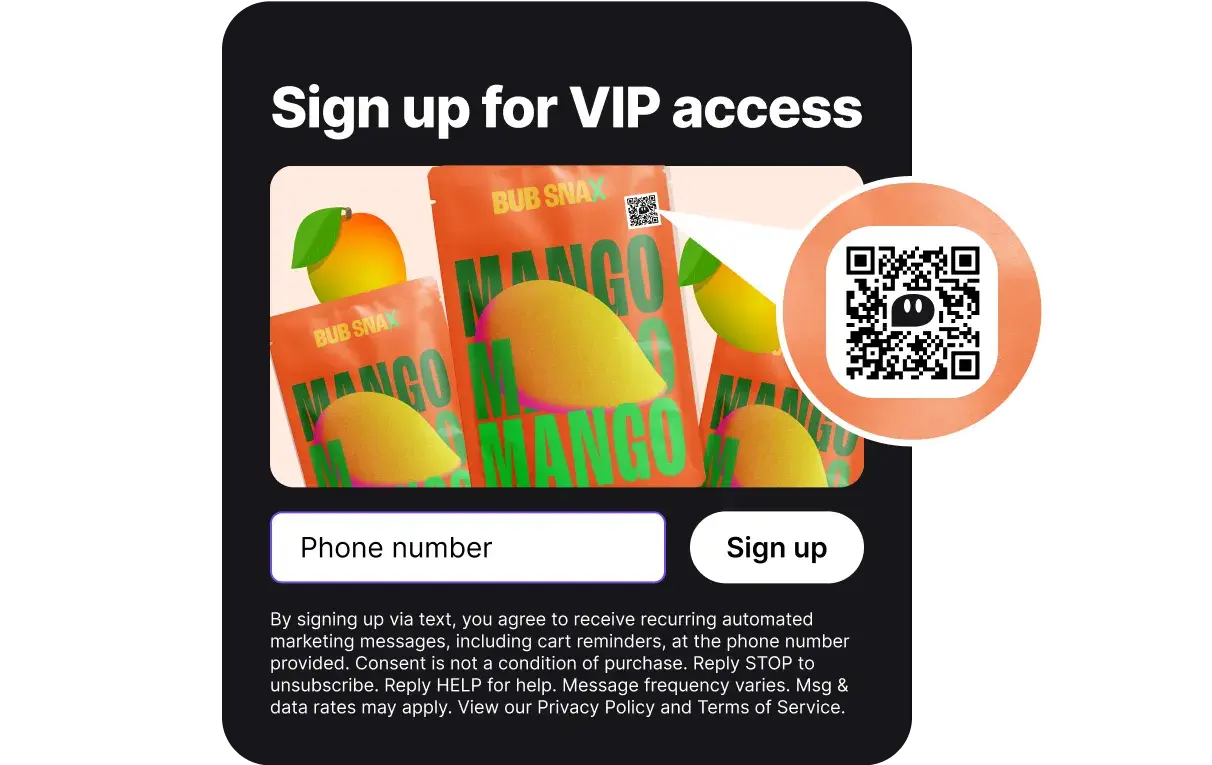

Step 2: Target and automate
One-size-fits-all messaging and batch-and-blast campaigns are going the way of the fax machine. The new wave of customer communication will focus on strategic automations and deeply segmented lists.
Automations
Multi-stage communications triggered by
specific events.
Automations are—you guessed it—automated messages that brands can set up across the customer lifecycle to engage, build relationships with, and ultimately retain their subscribers. Leading brands typically automate 80% of their SMS marketing efforts, with campaigns comprising the other 20%.
When executed well, automations allow brands to somewhat “set and forget” their SMS communications. This empowers brands to scale relationships much faster, because even though the messages are automated, they are highly personalized. Examples of popular automations include abandoned cart, post-purchase, cross-sell, and shipping notifications.
As you’re thinking about automations, mapping out your customer journey is a great place to start. Where are there communication holes or opportunities? How could an automated message encourage a valuable action, reduce friction, or reward your customer?

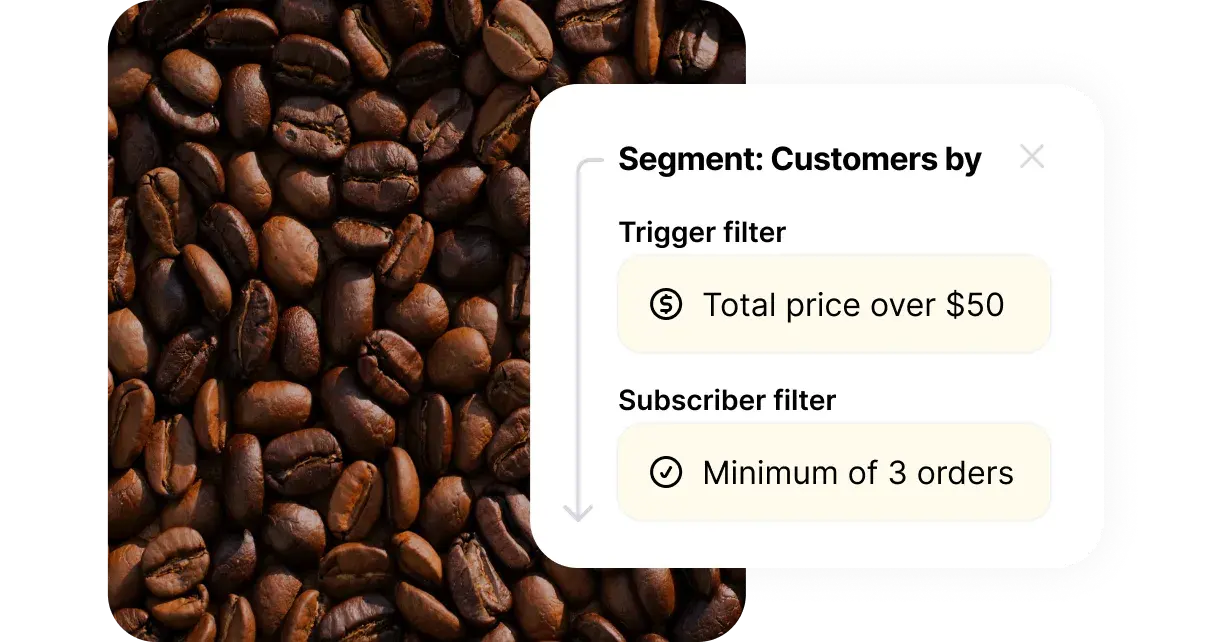
Segments
Groups of subscribers separated based on different characteristics or behaviors.
Segments are customizable, updated in real-time, and defined by the criteria that you choose.
Possible criteria may include:
Average Order Value
Number of Orders
Total Spent
Customer Created Date
By segmenting and adjusting your messages based on attributes like the ones mentioned above, you can get more intentional and targeted with your messaging. This will make your messages more relevant to each recipient, thus improving their experience and your bottom line.
Step 3: Engage and connect
The final step to crafting a Conversational Commerce 2.0 strategy is engaging and connecting with subscribers.
That means cutting the robot speak.
Text is personal. To make your messages feel authentic, you’ve gotta make them sound human. Here’s how to do that at scale.
First and foremost, engage with customers who engage with you. This type of 1:1 interaction is at the heart of Conversational Commerce 2.0.
For example, let’s say one of your subscribers responds to a product drop campaign because they’re super excited to try out your new goods. Don’t let their enthusiasm go unnoticed! Reply with an on-brand response that mirrors their excitement. By acknowledging and interacting with your most engaged subscribers, you’ll build deeper relationships.
Even on the support front, quick, personalized responses go a long way toward preserving customer satisfaction and loyalty. In fact, we recommend moving all transactional/customer service communications to SMS whenever possible. This includes requests for feedback, user-generated content, and reviews.


Engage and connect with campaigns
When sending campaigns selectively, don’t forget that ol’ 80% automations versus 20% campaigns rule of thumb. Here’s how to ensure you’re engaging and connecting with subscribers with every campaign you send.
Keep it relevant and timely.
Use filtering and segmentation to make sure your campaigns only go to subscribers who are the best fit for each individual message.
Stay human.
This goes not only with copy, but also targeted creative (think GIFs, images, etc.).
Surprise and delight.
Focus on delivering not only information, but also experiences. How can you make your subscribers’ day?
Part 3: Conversational commerce 2.0 in the wild
So, you’re on board with Conversational Commerce 2.0 and understand what it takes to craft a best-in-class strategy. But what does it look like when done right? Here are four brands that are crushing Conversational Commerce 2.0 right now.
And if you’re hungry for more, head to Fantastic Texts for a massive index of the world's best Conversational Commerce 2.0 messages.
Olipop launches new flavors with a human touch
Alternative soda brand Olipop knows how to send a timely, relevant campaign. This launch of their newest flavor is a home run for a variety of reasons.
The campaign comes from their co-founder and includes a picture of him.
This message went to Olipop’s hotline subscribers and included a pre-order link (hello, surprise and delight).
The formatting of the message makes it easy to read thanks to spacing breaks.
Emojis help tell a story and add some on-brand character.
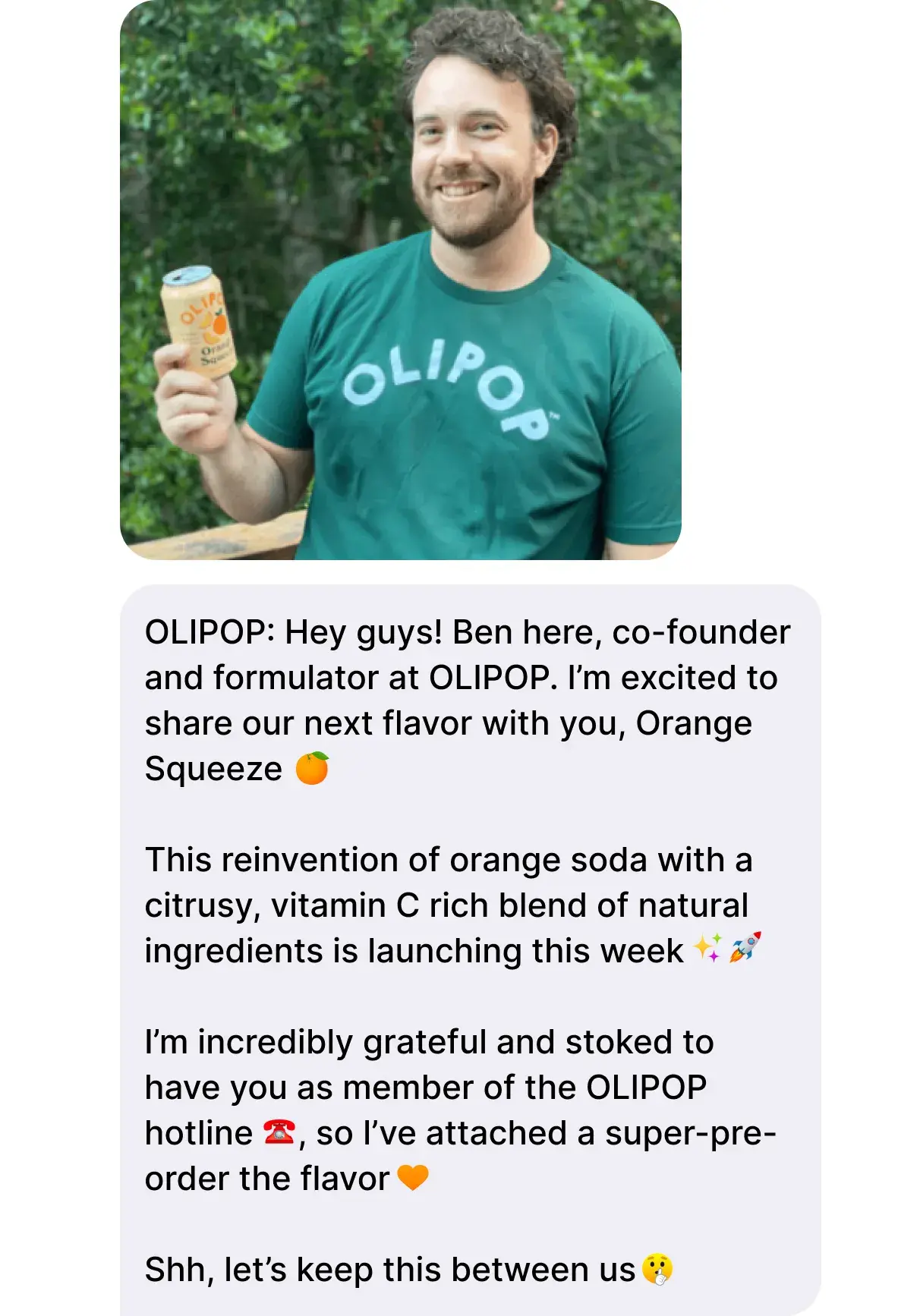
HydroJug crafts a tailored abandoned cart strategy
Water bottle brand HydroJug understands the power of fine-tuning their marketing tactics. Instead of a one-and-done abandoned cart automation series, they created four different abandoned cart sequences based on the number of orders a subscriber has placed.
Changing up the offer for subscribers with varying levels of engagement and different purchasing history is a smart tactic, especially when you have strong brand affinity.
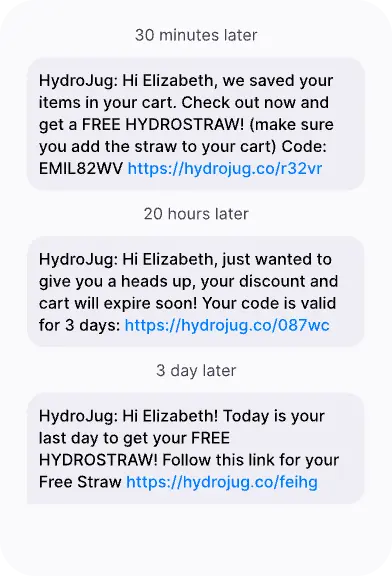
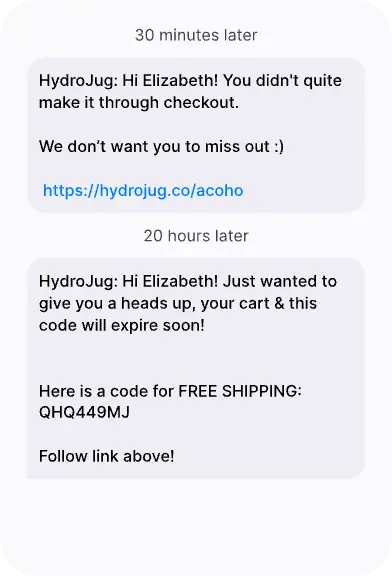

Blume nails surprise and delight with free coffee
Wellness brand Blume sent subscribers a Starbucks gift card so they could enjoy their favorite drink free of charge. This unusual use of a campaign has helped Blume build a loyal customer base and served as a great tool for word-of-mouth marketing.
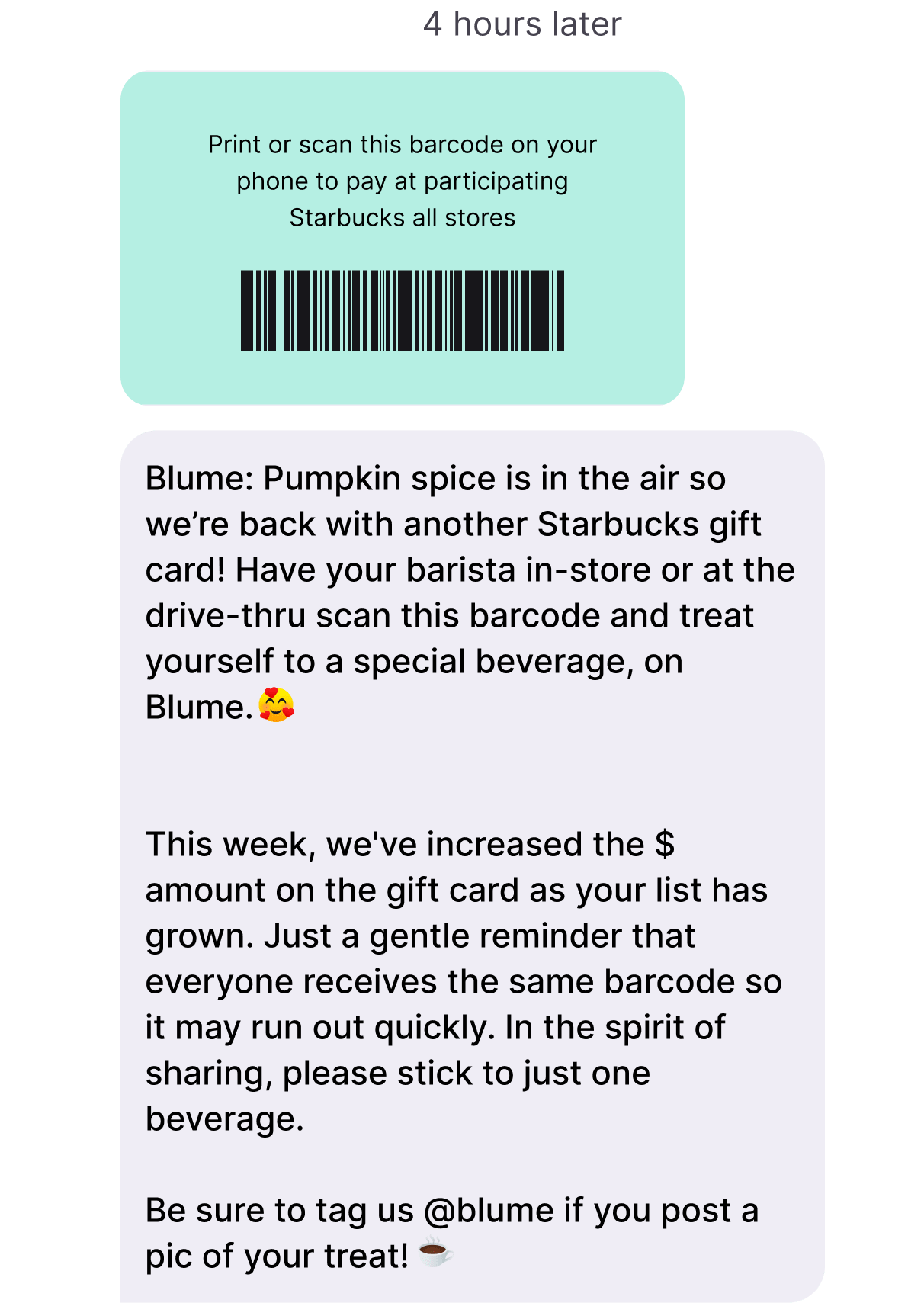

Hydrant drives adoption with first order delivered automation
Hydration supplement brand Hydrant sends this automation to subscribers once their first order has been delivered. It prompts them to opt in via keyword to receive another automation—one that is educational and aimed at driving product usage.
This is a particularly smart automation. It’s well-timed, and it opens the door for more engagement and interaction. And even those who don’t opt in still receive a timely message ten days later with a solid offer.
Curious about the seven-day series generated from the keyword reply? We’ve got you covered below.
Curious about the seven-day series generated from the keyword reply? We’ve got you covered below.
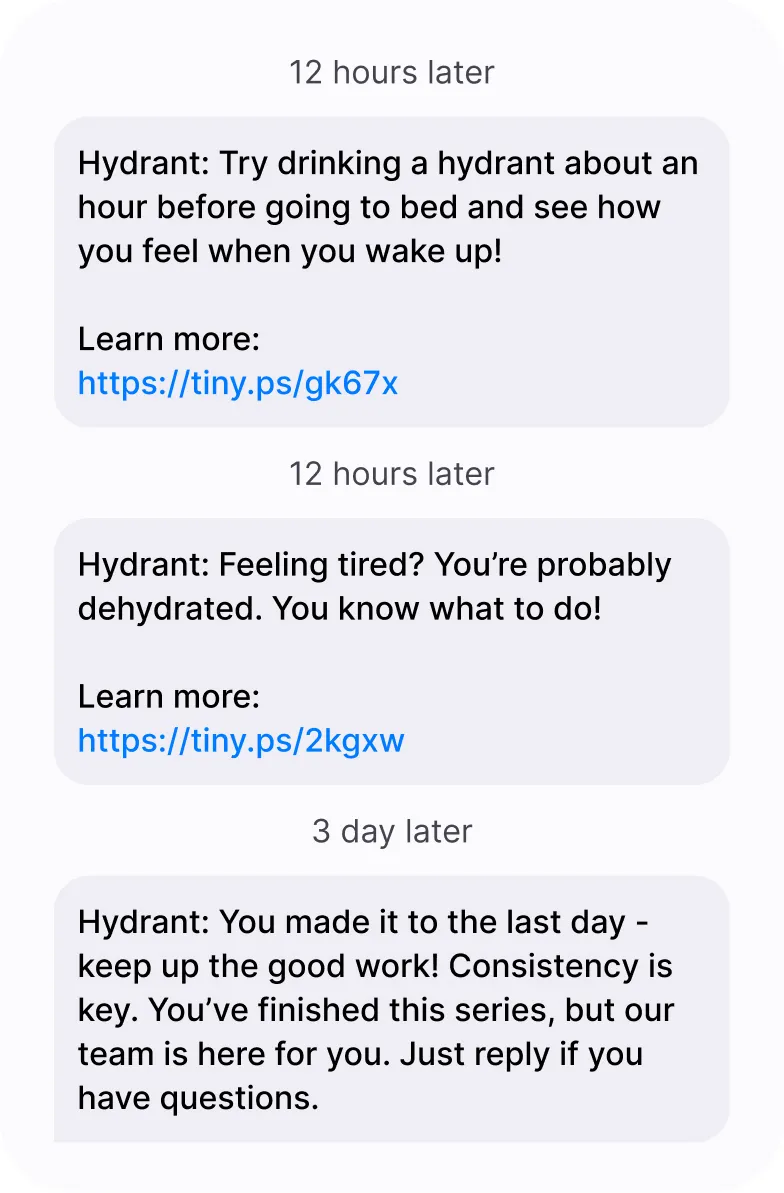

The TL;DR: 5 steps to be successful in conversational commerce 2.0
Take a segmented, personalized approach to sending messages.
Be empathy-driven, treat subscribers and customers like people, and focus on the end goal of building a long-term relationship.
Build and grow your list using both static and active list growth tactics.
Target and automate your communications based on buyer behavior and other data to provide relevant and timely interactions.
Engage and connect with your audience by responding to incoming messages, being human, and sprinkling in elements of surprise and delight.



